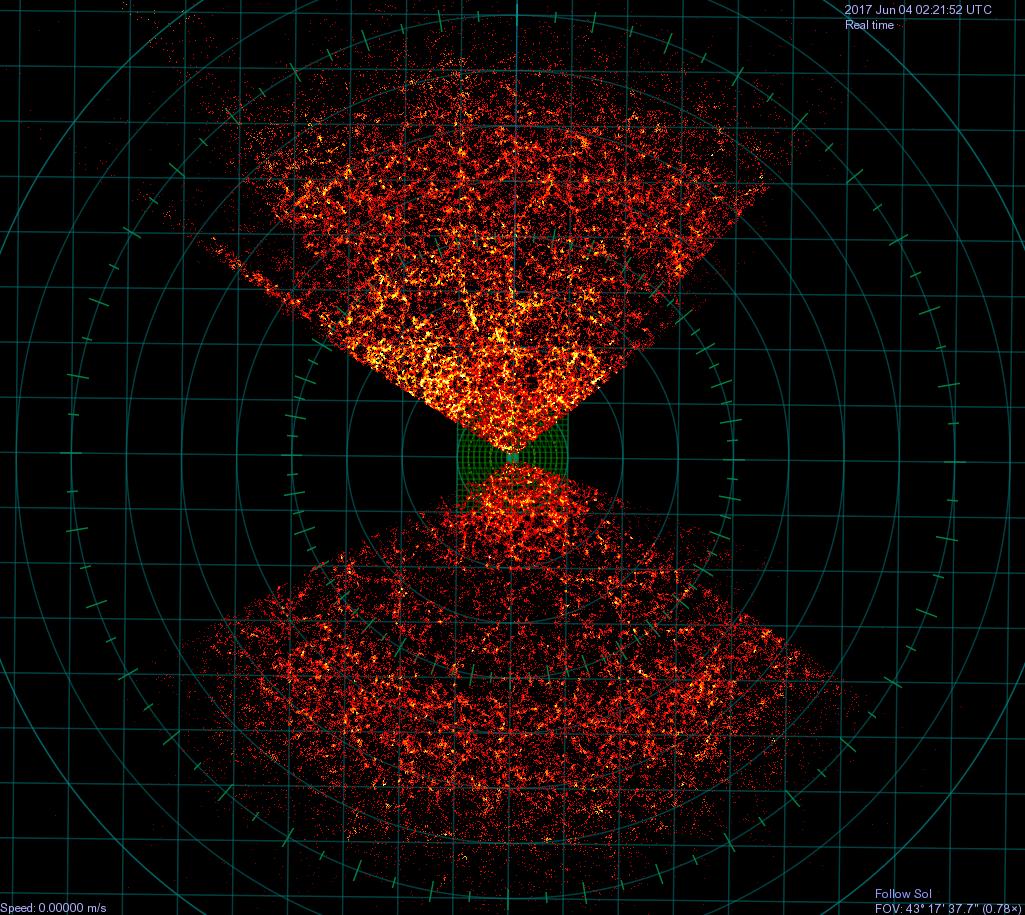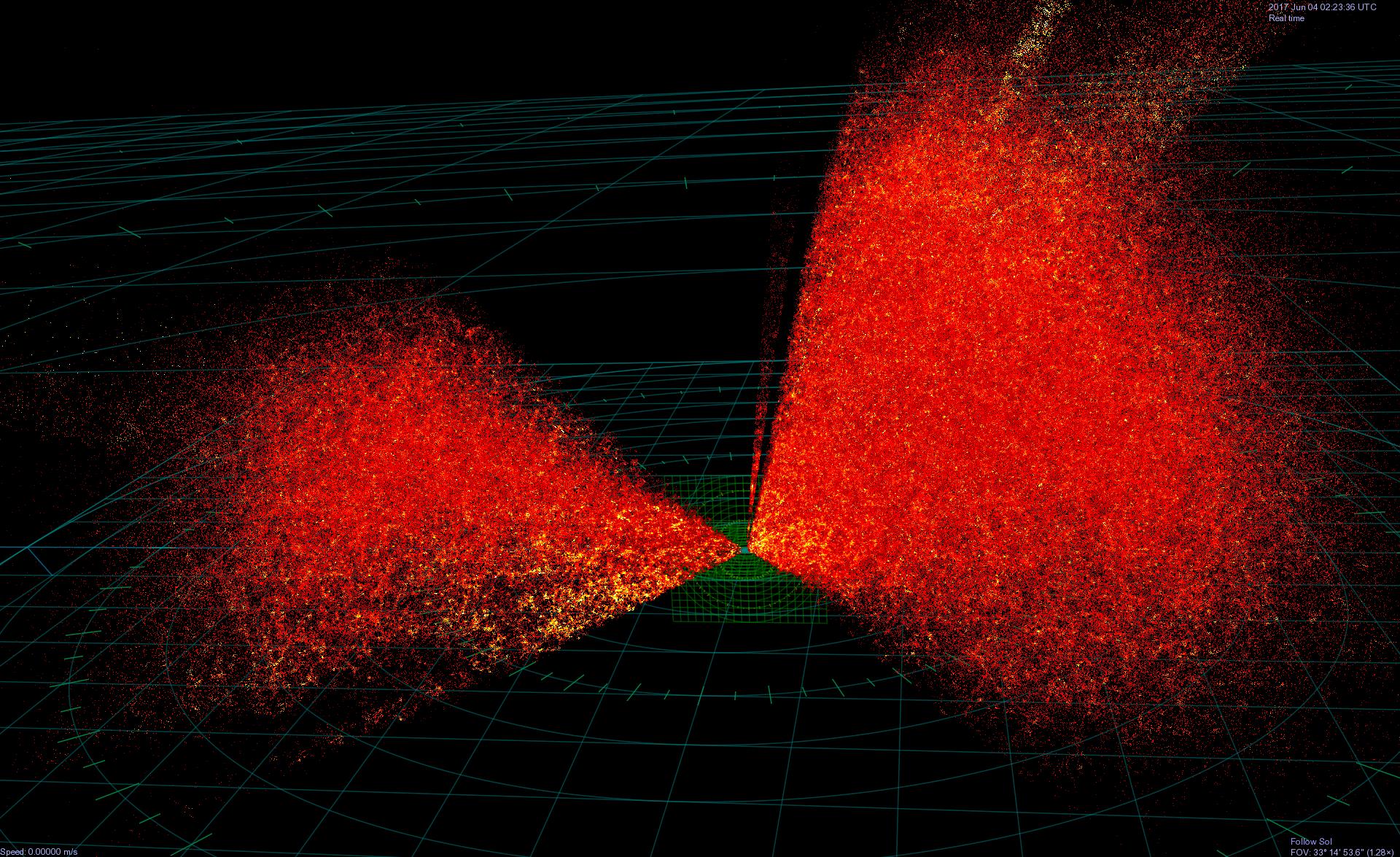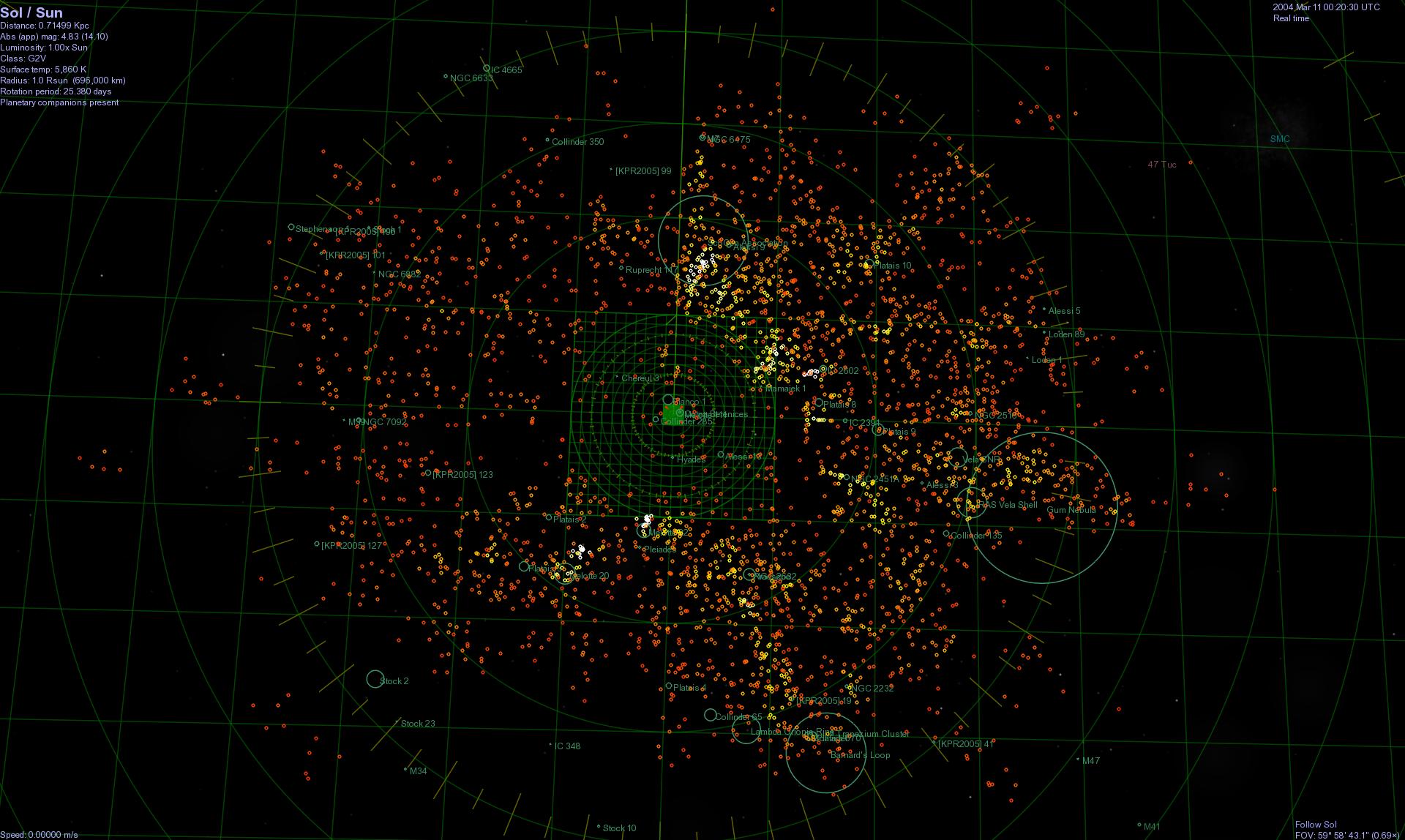nroutes.celx is a Celestia script which creates a .CMOD model of lines, each drawn between any pair of Celestia objects, any color you want, and with their visibility potentially controllable by a Visibility setting.
https://www.classe.cornell.edu/~seb/celestia/files/nroutes.zip
(9KB expands to 15KB)
See its accompanying readme file for usage details.
Briefly, nroutes.celx reads a .csv file, each line (row) of which defines a separate route. You don't have to specify the RA, Dec and distances of their endpoints yourself, instead you specify object names which are known to Celestia. The script extracts their (cartesian ecliptic) coordinates from Celestia and uses those values to create a .cmod model file.
For example, one of the lines (rows) in the the .csv file used to specify a route between Alpha Centauri and Sirius could look like this:
ALF Cen,Sirius,1.0,1.0,0.0, alpha cen to sirius
The first two fields are the names of two Celestia objects which are the endpoints of the line. They can be any of the synonyms known to Celestia for any of its STC or DSC objects. The three numeric fields specify R, G and B values used to color the route line. The text following the 5th comma is ignored.
(In principle one could specify SSC object names, but they change position and the CMOD lines don't.)
The structure of the .csv is rather restrictive (e.g. no embedded blank lines or comment lines) but the script does not try to verify that you've entered the correct names or used the right line format. Either the script or Celestia will crash or the CMOD won't be drawn if the data is too badly messed up. In principle a lot of error detection could be added, but I just didn't feel like spending the time on it. Maybe some future version could do that. Or maybe someone else could make the appropriate changes to the script.








